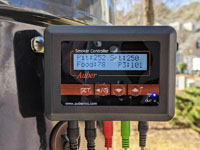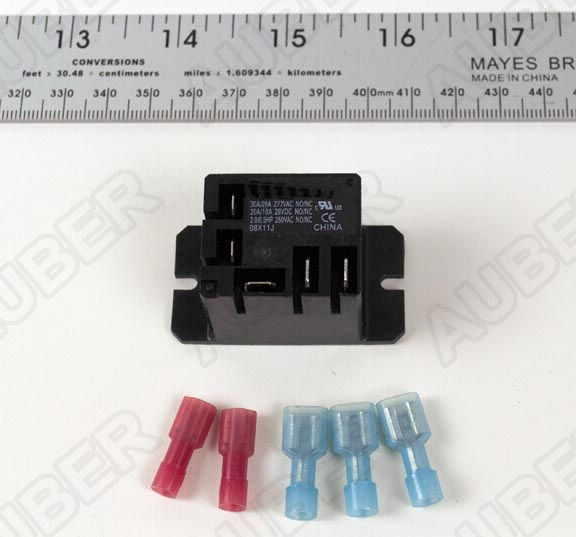This digital solid state power regulator (DSPR1) is for manually adjusting the power output on a solid state relay (SSR). It can be used for controlling wort boiling during beer brewing. User can adjust the SSR output power from 0% to 100% by turning the digital rotary encoder with 1% resolution. Using the rotary encoder to change the numeric value is much easier than using the key pad, as in many PID controllers on the market. In contrast to our SSVR, this unit is able to regulate the power almost linearly, with high precision, good reproducibility, and low electromagnetic interference (EMI).
This regulator offers two firing modes: burst firing (default mode) and time proportional firing. The burst firing mode is preferred for resistive loads, which can provide a uniform power output to the heater and can extend the life time of the heater. The firing signal is a series of short pulses distributed over one hundred AC line cycles. The duration of each pulse equals to one AC line cycle (16.67 milliseconds for 60Hz or 20 milliseconds for 50 Hz, automatically detected by the regulator). This mode is not suitable for situations where an SSR is used to control electromechanical relays, mercury displacement relays, or heaters with unusual resistance characteristics. The time proportional firing mode can be used for a SSR that is controlling a device not conducive to high frequency of switching, such as electromechanical relays and mercury displacement relays. Under this mode, user can select the cycle time from 1 to 99 seconds. If the cycle time is set to 10 seconds, a 10% output means 1 second on and 9 second off. This is the same as the manual mode of Auber’s PID controller.
Please note, this unit should be used with SSR (see our 5A, 25A, 40A, 80A, 100A SSR), it's not compatible with Solid State Voltage Regulators (SSVR).
Specifications
Power input: 90-260VAC, 50 Hz or 60 Hz.
Control resolution: 1%.
Control mode: burst firing mode* (default), time proportional mode**. (See Note1 below)
Output: 12VDC, 80 mA. (can drive up to 6 SSRs in parallel)
SSR requirement: Zero-cross, DC triggered AC SSR.
Dimension
Overall: 1.89 x 1.89 x 3.94" (48 x 48 x 100 mm), 1/16 DIN.
Mounting cut out: 1.77 x 1.77" (45 x 45 mm)
Length: 86 mm (from the front panel to the back); 100 mm if include the rotary knob.
Note 1:
* The burst rate will between 1 and 100 pulses for each 100 AC cycles. The pulse width equals to one AC cycle. It is automatically adjusted for 50 or 60 Hz.
** Cycle time: 1-99 seconds.
Detailed comparison of DSPR1 to other wort boiling control methods.
1) DSPR1 vs. PID controller's Manual mode.
Advantages:
- More uniform power output. Finer power control.
- The rotary knob is easier to adjust than the small keys.
- Easy to set up.
- Lower cost.
Disadvantage:
- It does not display the temperature
2) 1) DSPR1 vs. SSVR, Triac, or SCR
Advantages:
- The power adjustment is linear, finer, accurate and reproducible.
- Because of the zero crossing switch function of the SSR, it eliminates the potential electromagnetic interference (EMI or RFI) by chopping the sine wave of the AC when there is a inductive device on the same power line.
- More choices for SSR size selection.
- Multiple SSRs can be controlled by a single controller.
- The control signal is a low voltage DC signal that is safer to handle.
Disadvantage:
- The output is slight less uniform than the SSVR.
- Higher cost when only one SSR is used.
- Need to cut a square hole to mount the regulator.
Note2:
We also offer a version that has a built-in SSR that can handle 3 Amp of current. It is for manually adjusting a small heater, small AC fan, or pump. Click DSPR2 for more information.
Click here for instruction manual.
This product was added to our catalog on Sunday 10 August, 2014.



